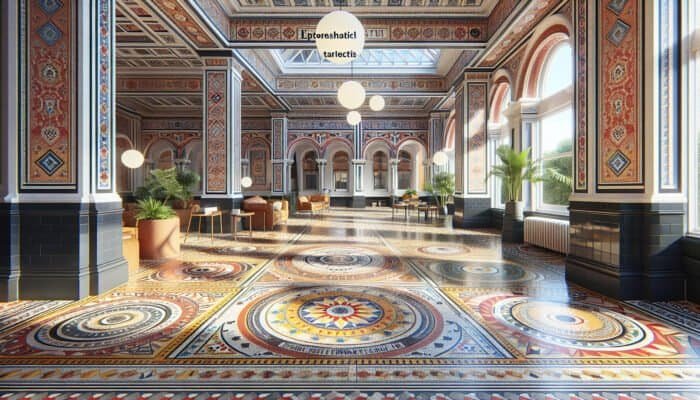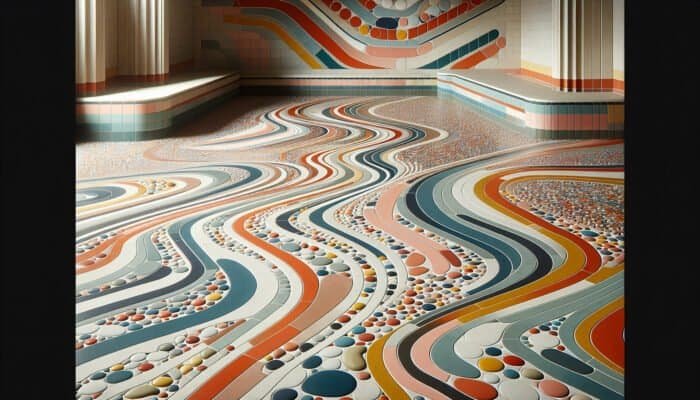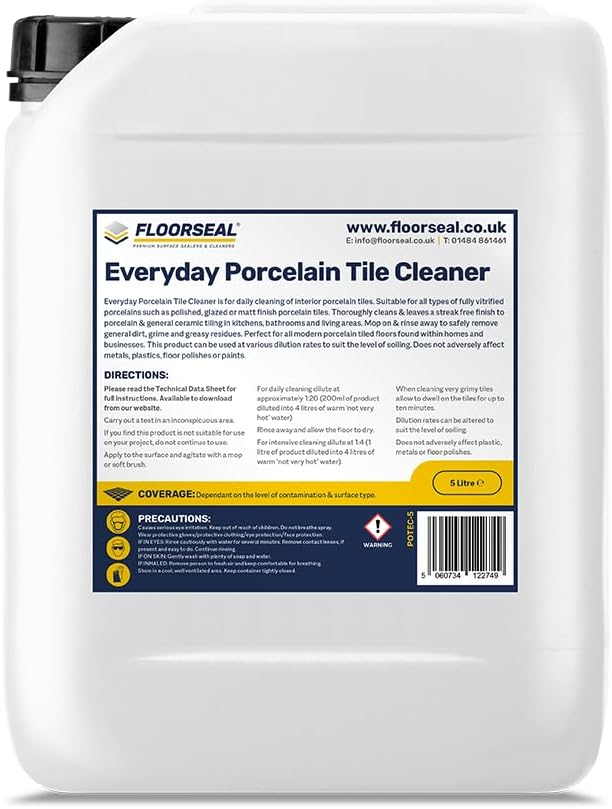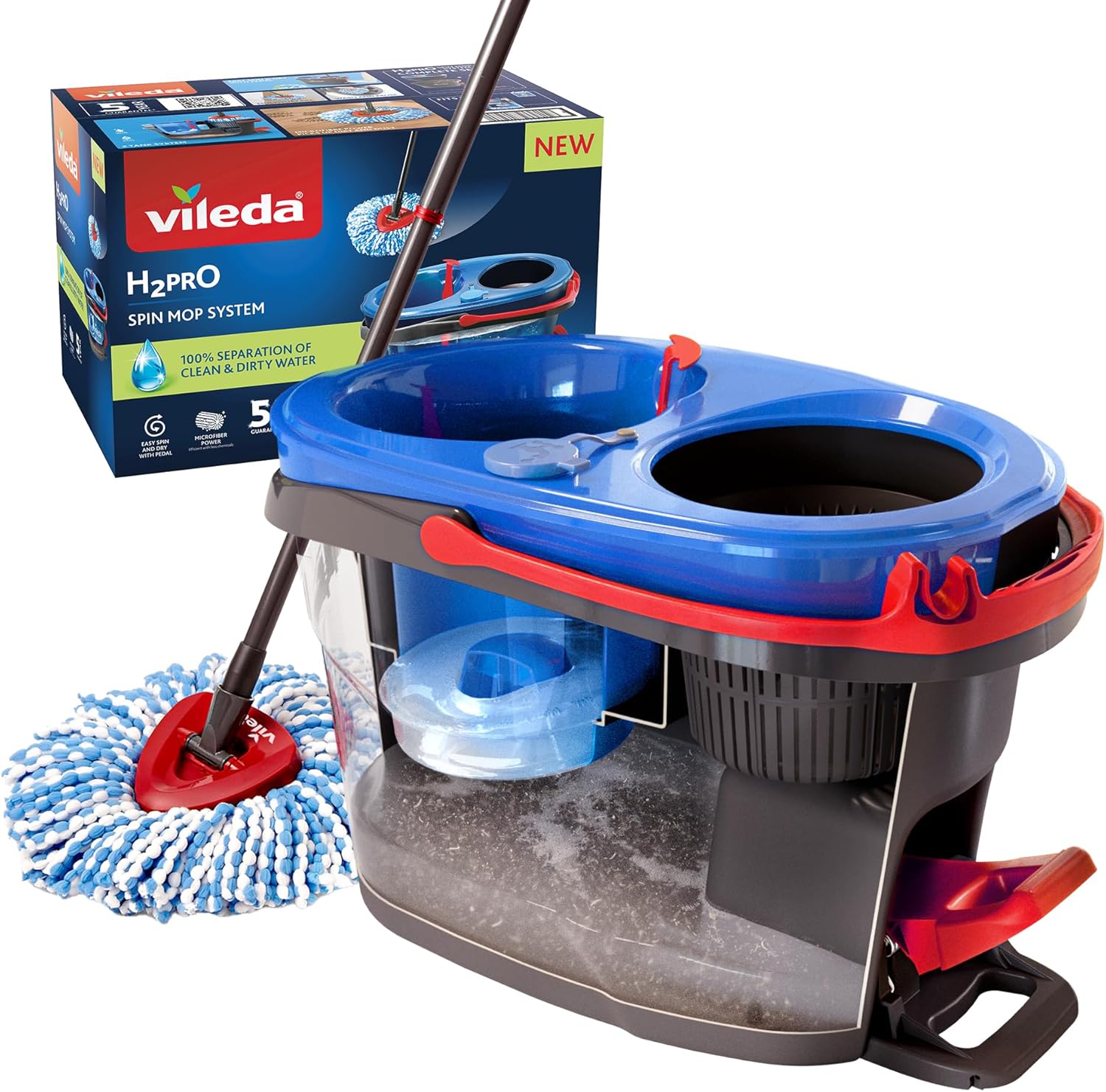Uncover the Rich Heritage and Evolution of Terrazzo Flooring in the UK
Discover the Origins and Growth of Terrazzo Flooring

Terrazzo flooring is steeped in a profound and elaborate history that stretches back to ancient civilisations, and its evolution in the United Kingdom presents a particularly engaging story. This stunning flooring style was initially developed in Italy by skilled Venetian artisans, who ingeniously utilised leftover marble chips. The introduction of terrazzo to the UK can be traced back to the Victorian era, a period distinguished by innovation, elegance, and architectural grandeur. The Industrial Revolution was instrumental in elevating the popularity of this flooring type, as advancements in transport and construction allowed for its widespread adoption. Its remarkable versatility quickly captivated the attention of architects and builders, leading to its extensive application in both public and private buildings across the nation.
As the 20th century unfolded, terrazzo flooring in the UK experienced a significant evolution, embracing modern design principles and aesthetics. Architects began to challenge creative boundaries, experimenting with a wide spectrum of colours, intricate patterns, and various materials. This evolution resulted in distinctive terrazzo installations that elegantly merge historical significance with contemporary influences. Today, terrazzo flooring has transcended its initial functional purpose, evolving into a breathtaking focal point that enhances the visual appeal of diverse spaces while echoing the rich architectural heritage of the UK.
Essential Guidelines: Top Products for Effective Terrazzo Maintenance
Showcasing Renowned Terrazzo Installations Throughout the UK
The United Kingdom is home to a wealth of iconic buildings that exemplify the aesthetic beauty and durability of terrazzo flooring. A prominent installation can be discovered in the esteemed London Transport Museum, where the flooring not only serves an essential functional purpose but also stands as a remarkable piece of art. This installation features intricate designs that recount the rich history of London’s public transport, captivating visitors with its visual allure and the narratives it communicates.
Moreover, the Royal Festival Hall, a prestigious venue for concerts and performances, showcases stunning terrazzo floors that harmoniously integrate with its mid-century modern design. These installations not only enrich the atmosphere of these significant spaces but also encapsulate stories of exceptional craftsmanship, illustrating the enduring legacy of terrazzo within British architecture.
In addition to these notable venues, a multitude of educational institutions, including universities and schools, have embraced terrazzo flooring due to its practical benefits and aesthetic charm. These installations reflect a commitment to quality and resilience, making them ideal choices for high-traffic environments where durability is paramount.
Exploring Contemporary Applications of Terrazzo in Architectural Design
In recent years, the use of terrazzo has witnessed a remarkable surge within the sphere of modern architecture and design across the UK. It is increasingly favoured not only as flooring material but also for walls, countertops, and even furniture, showcasing its extraordinary versatility. Designers are becoming more adventurous, incorporating innovative colour palettes and aggregates that blend traditional marble with contemporary elements such as glass and resin, offering a refreshing and captivating perspective on this timeless technique.
The rising focus on sustainable construction practices has profoundly influenced modern terrazzo applications. As the demand for eco-friendly materials continues to grow, many manufacturers are offering recycled options that incorporate post-consumer glass and other sustainable components. This shift aligns seamlessly with the increasing emphasis on sustainability in design, ensuring that terrazzo remains relevant and appealing in a rapidly evolving marketplace.
Furthermore, the hospitality and retail sectors have recognised the potential of terrazzo in crafting inviting and visually stunning environments. Upscale restaurants, luxurious hotels, and boutique shops are increasingly opting for custom terrazzo designs that establish a distinctive identity and enhance the customer experience, showcasing the material’s adaptability and timeless elegance.
Italian Terrazzo Techniques and Their Influence on UK Craftsmanship

The impact of traditional Italian terrazzo techniques is prominently visible in the UK, where local artisans and craftsmen have embraced and adapted these methods to resonate with regional aesthetics and preferences. The meticulous artistry that defines Italian terrazzo is now mirrored by UK-based terrazzo specialists, who skillfully blend time-honoured practices with cutting-edge technology to create stunning flooring solutions.
This harmonious fusion of tradition and innovation is exemplified in the vibrant designs that characterise contemporary terrazzo installations in the UK. The integration of local aggregates and modern colour schemes has resulted in a uniquely British interpretation of the Italian style, appealing to a diverse array of consumers, from homeowners to commercial enterprises.
Moreover, Italian artisans have played a crucial role in educating and training UK tilers and flooring specialists, ensuring that the essential skills required to produce authentic terrazzo are transmitted through generations. Workshops and training sessions conducted by Italian experts have enriched the local industry, fostering a deeper appreciation and understanding of this intricate art form.
Preservation and Restoration Initiatives for Historic Terrazzo Installations
The conservation of historic terrazzo installations is a vital endeavour championed by various conservation organisations across the United Kingdom. Many older buildings adorned with terrazzo flooring face the threat of neglect and deterioration, prompting the rise of specialised restoration services aimed at safeguarding these treasures for future generations.
Numerous initiatives are dedicated to preserving significant terrazzo installations found in public buildings, theatres, and railway stations. These efforts not only protect architectural heritage but also educate the public about the importance of terrazzo as a unique art form. Restoration projects often involve meticulous cleaning, repairing damaged areas, and occasionally recreating lost patterns, ensuring that the original beauty of the terrazzo is preserved for years to come.
With an increasing recognition of the importance of heritage conservation, more organisations are joining forces to share best practices and resources for terrazzo restoration. This collaborative spirit reflects a commitment to honouring the past while ensuring that future generations can appreciate these exquisite installations.
Investigating the Diverse Types of Terrazzo Materials
Maximising the Advantages of Epoxy Terrazzo

Epoxy terrazzo has surged in popularity throughout the UK, thanks to its exceptional versatility and resilience. Comprising a blend of resin and aggregates, epoxy terrazzo can be poured into intricate designs and patterns, allowing for nearly boundless creativity. This material's adaptability makes it an ideal choice for both commercial and residential applications, whether in sleek office environments or stylish home interiors.
The benefits of epoxy terrazzo are extensive, including its resistance to stains, moisture, and wear, making it an optimal choice for high-traffic areas. For instance, numerous healthcare facilities and educational institutions are selecting epoxy terrazzo due to its hygienic properties and ease of maintenance. The seamless nature of epoxy installations contributes to a cleaner, more modern aesthetic, aligning perfectly with contemporary design preferences.
Furthermore, the vast array of colours and finishes available with epoxy terrazzo allows for customisation that can reflect a brand's identity or personal style. Designers in the UK are increasingly leveraging these features to create standout designs that capture attention and enhance the overall environment.
The Enduring Appeal of Cementitious Terrazzo
Cementitious terrazzo represents the traditional form of this material, admired for its classic appearance and robust characteristics. This formulation combines cement with aggregates and is typically installed in thicker applications, resulting in a more substantial feel underfoot. Cementitious terrazzo often evokes nostalgia, reminiscent of the elegant flooring seen in historic buildings throughout the UK.
One of the primary advantages of cementitious terrazzo is its capacity to achieve a polished, high-gloss finish that enhances its natural beauty. When well-maintained, cementitious terrazzo can endure for decades, making it a smart investment in both style and durability. Many heritage buildings and public spaces in the UK still proudly display original cementitious terrazzo floors, underscoring the material's timeless allure.
In addition to its aesthetic charm, cementitious terrazzo is often commended for its thermal mass, which helps in regulating indoor temperatures. As a result, many architects specify cementitious terrazzo for projects aimed at sustainability and energy efficiency, aligning with contemporary environmental considerations.
Creating Striking Designs with Glass and Marble Terrazzo
Glass and marble terrazzo offers a visually stunning appeal that enhances any space it occupies. This type of terrazzo incorporates crushed glass and marble chips into the mix, creating a dynamic interplay of textures and colours that can be customised to fit any design scheme. The reflective qualities of glass add depth and luminosity to interiors, making it a popular choice for both residential and commercial applications.
In the UK, glass and marble terrazzo is increasingly utilised in luxury developments, high-end retail environments, and bespoke installations. The unique characteristics of this material empower designers to create one-of-a-kind pieces that make striking statements and enhance the overall character of the space.
Moreover, the combination of glass with traditional marble aggregates promotes a more sustainable approach to design. Many manufacturers are now sourcing recycled glass for terrazzo production, aligning with the growing demand for eco-friendly materials within the UK market. This fusion of aesthetics and sustainability highlights the evolving nature of terrazzo design and its relevance in contemporary architecture.
Understanding the Comprehensive Process for Terrazzo Installation
Key Steps for Effective Surface Preparation
Properly preparing the surface for terrazzo installation is essential for achieving a smooth and durable finish. The initial step in this process involves assessing the existing substrate. In the UK, surfaces can vary significantly, from concrete slabs to wooden floors, each requiring specific preparation techniques. A thorough inspection will help identify any necessary repairs or modifications that need to be addressed before installation.
Once the assessment is complete, the surface must be thoroughly cleaned and levelled. This often entails the removal of any existing flooring, debris, or contaminants that may hinder adhesion. For concrete surfaces, this might involve grinding or shot blasting to create a rough texture that promotes bonding. In cases where moisture is a concern, applying a moisture barrier can help prevent future complications, ensuring a solid foundation for the terrazzo installation.
Following surface preparation, installers typically apply a bonding agent or primer to enhance adhesion. This step is essential, as a solid foundation is critical for the longevity and performance of the terrazzo. Proper surface preparation sets the stage for a successful installation, underscoring the importance of skilled craftsmanship in the process.
The Artistry of Mixing and Pouring Terrazzo
The mixing and pouring of terrazzo is where artistry meets technique. In the UK, professional installers often utilise customised mixes tailored to the specific requirements of each project. For epoxy terrazzo, this involves blending the resin and hardener with selected aggregates, ensuring a uniform mixture that achieves the desired colour and texture.
The pouring process demands precision and skill, as the installer must evenly spread the mixture across the prepared surface. Techniques such as the use of screeds or trowels ensure that the terrazzo is level and consistent in its appearance. For larger areas, installers may employ automated mixing and pouring equipment to achieve a seamless finish that meets high standards of excellence.
Once poured, the terrazzo mixture is often vibrated to eliminate air bubbles, which can compromise the integrity of the final product. This step is crucial for achieving a flawless surface that showcases the beauty of the materials used. Attention to detail during this phase lays the groundwork for the stunning aesthetics that terrazzo is celebrated for, resulting in a durable and visually pleasing floor.
Grinding and Polishing: Achieving a Flawless Terrazzo Finish
Grinding and polishing are vital phases in the terrazzo installation process that ultimately determine the final appearance of the floor. After the terrazzo has cured, the surface undergoes grinding to remove any imperfections and achieve a uniform thickness. In the UK, contractors typically use a series of diamond grinders, progressively moving from coarse to fine grits to attain the desired smoothness.
During this phase, installers must exercise caution to avoid damaging the aggregates within the terrazzo. The goal is to expose the aggregate particles while creating a polished, reflective surface that enhances the design’s beauty. The grinding process can be meticulous and time-consuming, requiring skilled technicians to achieve optimal results.
Following the grinding process, the floor is polished using fine diamond pads or polishing compounds that bring out the shine and depth of the terrazzo. This step not only elevates the aesthetic appeal but also prepares the surface for sealing, ensuring longevity and durability. A well-executed grinding and polishing process yields a stunning finish that accentuates the unique characteristics of the terrazzo.
Ensuring Longevity with Proper Curing and Sealing Techniques
Curing and sealing are fundamental to the longevity and performance of terrazzo flooring. Once the grinding and polishing are completed, the floor must be allowed to cure fully, which can take several days, depending on the materials used and environmental conditions. This curing period is critical for the chemical reactions within the terrazzo to occur, ultimately solidifying the material and enhancing its durability.
After the curing process, sealing the terrazzo becomes essential for protecting the surface from stains, moisture, and wear. In the UK, various sealers are available, ranging from penetrating sealers that allow the floor to breathe to topical sealers that provide a glossy finish. The choice of sealer often depends on the intended use of the space and the desired aesthetic outcome.
Regular maintenance of the seal is necessary to ensure the longevity of terrazzo flooring. Depending on the type of sealer used and the level of foot traffic, reapplication may be needed every few years to maintain the floor’s appearance and protective qualities. Proper curing and sealing practices are integral to the success of terrazzo installations, ensuring they endure the test of time.
Quality Assurance and Final Inspection for Exceptional Terrazzo Work
Quality control and inspection are critical components of the terrazzo installation process, ensuring that the final product meets the high standards expected by clients. In the UK, many professional terrazzo service providers implement stringent quality control measures at every stage, from surface preparation to the final finish.
During the installation, regular inspections are conducted to identify any issues early on. This proactive approach allows for adjustments to be made before the terrazzo is fully cured, preventing costly mistakes and ensuring a flawless result. Skilled technicians will assess the evenness of the pour, adherence to design specifications, and the overall quality of the work performed.
Upon completion of the installation, a final inspection is conducted to evaluate the overall appearance, durability, and performance of the terrazzo. Quality control measures often include testing for moisture levels, ensuring the seal has been applied correctly, and evaluating the finish for consistency. This meticulous attention to quality guarantees that every terrazzo project meets the expectations of both the installer and the client, solidifying the reputation of expert terrazzo services in the UK.
Discovering the Key Advantages of Terrazzo Flooring
Unmatched Durability and Longevity of Terrazzo Flooring
Terrazzo flooring is renowned for its exceptional durability, making it an ideal choice for various applications across the UK. Resistant to wear and tear, terrazzo can withstand high volumes of foot traffic without losing its shine, making it an excellent option for bustling commercial environments such as shopping centres and airports. This composite flooring, crafted from robust materials such as marble, glass, and resin, significantly contributes to its long-lasting nature.
Given the variable weather conditions in the UK, the moisture and humidity resistance of terrazzo provides considerable advantages. Unlike traditional wooden flooring, which is prone to warping or rotting over time, terrazzo maintains its structural integrity, even in environments subjected to temperature fluctuations. This characteristic renders it suitable for both indoor and outdoor applications, providing a wide array of creative design possibilities that appeal to architects and builders alike.
Moreover, terrazzo flooring requires minimal maintenance, further enhancing its appeal. When properly installed and sealed, terrazzo is easy to clean and inherently resistant to staining, making it a practical choice for both residential and commercial settings. This durability translates into long-term value, as the lifespan of well-maintained terrazzo can exceed 50 years—an investment that yields significant returns over time.
Limitless Aesthetic Possibilities with Terrazzo Flooring
The aesthetic versatility of terrazzo flooring allows for boundless creativity in design, making it a favourite among architects and designers in the UK. With an extensive range of colours, patterns, and textures available, terrazzo can be tailored to fit various tastes and styles, whether in contemporary residences or historic buildings.
In recent years, designers have integrated innovative combinations of aggregates, including recycled materials, to craft distinctive and visually striking designs. The ability to embed custom logos or intricate patterns further enhances terrazzo’s appeal, transforming each installation into a bespoke masterpiece. This versatility is particularly advantageous for commercial spaces where branding and identity are crucial, allowing businesses to create unique environments that resonate with their clientele.
Additionally, terrazzo can complement a wide spectrum of interior styles, from sleek modern aesthetics to more traditional designs. Its adaptability allows it to be seamlessly integrated with other materials, such as wood or metal, creating harmonious spaces that reflect a cohesive vision. The visual impact of terrazzo flooring can transform any environment, making it a sought-after choice for high-end residential projects, hotels, and restaurants.
Commitment to Sustainability in Terrazzo Flooring Solutions
As sustainability becomes an increasingly critical consideration in the UK construction industry, terrazzo flooring stands out as an eco-friendly option. Many terrazzo manufacturers now prioritise the use of recycled materials, such as glass and stone aggregates, significantly reducing the environmental impact of the production process. This conscious effort aligns with the growing demand for sustainable building materials among consumers and businesses alike.
The longevity of terrazzo also contributes to its sustainability; its durability means that it does not require frequent replacement, thereby minimising waste over time. When properly maintained, terrazzo can last for decades, making it a resource-efficient choice for flooring. This long lifespan, coupled with the use of sustainable materials, positions terrazzo as a responsible option for environmentally conscious consumers seeking stylish and sustainable solutions.
Furthermore, the seamless nature of terrazzo eliminates the need for additional adhesives or grout lines, reducing the amount of chemicals released into indoor environments. This characteristic contributes to healthier indoor air quality, making terrazzo an excellent choice for residential and commercial spaces where well-being is a priority.
Essential Maintenance and Care Guidelines for Terrazzo Flooring
Implementing Effective Daily Cleaning Practices
Maintaining the beauty and integrity of terrazzo flooring requires the establishment of a consistent daily cleaning routine. In both residential and commercial settings across the UK, employing a soft broom or vacuum can efficiently remove dust and debris without scratching the surface. When mopping, it is advisable to utilise a damp mop with a pH-neutral cleaner specifically formulated for terrazzo to prevent damage to the finish and preserve its sheen.
Regular cleaning not only enhances the appearance of terrazzo but also helps prevent the accumulation of dirt and grime that can lead to more significant problems over time. For high-traffic areas, more frequent cleaning may be necessary to maintain a pristine look. It is crucial to avoid harsh chemicals or acidic cleaners, as they can dull the surface and compromise the protective seal.
In addition to routine cleaning, placing mats or rugs at entry points can significantly reduce dirt and moisture tracked onto terrazzo floors. This simple practice can extend the life of the flooring and decrease the frequency of deep cleaning or restoration, making it a valuable component of a comprehensive maintenance strategy.
Recognising the Importance of Periodic Maintenance for Longevity
Periodic maintenance plays a vital role in ensuring the long-term performance of terrazzo flooring. In the UK, this typically involves a more thorough cleaning and maintenance regimen every few months, depending on foot traffic and environmental conditions. During these maintenance sessions, the floor should be stripped of old sealants and polished to restore its shine and protective layer, ensuring it remains visually appealing and functional.
It is advisable to inspect the sealant annually, as wear and tear can occur due to foot traffic and exposure to cleaning agents. When necessary, reapplication of the sealant will help safeguard the terrazzo from stains and moisture, ensuring it retains its beauty and integrity for years to come.
Additionally, addressing minor scratches or chips promptly can prevent them from developing into more extensive damage. Utilising a terrazzo repair kit can empower homeowners and facility managers to perform minor touch-ups, preserving the overall appearance and integrity of the floor.
Professional Repair and Restoration Services for Terrazzo Flooring
Despite its durability, terrazzo flooring may require repair or restoration over time due to factors such as heavy foot traffic, spills, or accidental damage. In the UK, professional repair services are readily available to address issues ranging from minor scratches to significant cracks or chips that necessitate intervention to maintain the floor’s visual allure.
For minor surface scratches, a simple polishing with a fine-grit pad can restore the floor’s shine and eliminate imperfections. In cases of more severe damage, such as cracks, a restoration expert will typically assess the extent of the damage and may recommend filling the crack with a suitable resin or epoxy to ensure a seamless repair that blends with the existing flooring.
Restoration projects often involve grinding and repolishing the floor to achieve a uniform finish that matches the surrounding area. Maintaining the original appearance is a priority for restoration professionals, ensuring that the floor remains a beautiful focal point of the space. Regular maintenance and prompt repairs will keep terrazzo floors looking their best, reinforcing their status as a long-lasting investment.
Guidelines for Choosing the Right Terrazzo Service Provider
Evaluating Experience in Terrazzo Services
Selecting the right terrazzo service provider is crucial for ensuring a successful installation. In the UK, experience plays a significant role in determining the quality of service and craftsmanship. Prospective clients should seek providers with a proven track record in terrazzo installation, restoration, and maintenance. Experience managing a diverse range of projects, from residential homes to large commercial installations, demonstrates versatility and expertise.
It is advisable to inquire about the specific types of terrazzo services the provider has completed in the past. This includes understanding the materials used, design complexity, and any challenges faced during previous projects. An experienced provider will be equipped to navigate potential issues and deliver a high-quality finished product that meets client expectations.
Furthermore, professional affiliations and memberships in industry organisations can serve as indicators of a provider’s commitment to staying updated on the latest trends and techniques in terrazzo installation. These affiliations often reflect a dedication to quality and craftsmanship, ensuring that clients receive a premium service.
Reviewing Portfolios for Assurance of Quality Work
Reviewing a provider’s portfolio is an essential step in selecting a terrazzo installer. A comprehensive portfolio showcases the range of projects completed and illustrates the quality of craftsmanship delivered. In the UK, prospective clients should look for diverse examples that demonstrate the provider’s ability to create custom designs tailored to various styles and requirements.
When examining the portfolio, it is crucial to pay attention to the details. Look for projects that highlight intricate patterns, unique colour combinations, and innovative applications of terrazzo. This careful scrutiny can help clients ascertain whether the provider’s design aesthetic aligns with their vision and expectations.
Additionally, requesting case studies or testimonials from previous clients can offer valuable insights into the provider’s working style, reliability, and overall satisfaction. A reputable terrazzo service provider will willingly share their successes and client feedback, further instilling confidence in their capability to deliver outstanding results.
Understanding the Importance of Client Testimonials in Decision-Making
Client testimonials play a vital role in the decision-making process when selecting a terrazzo service provider in the UK. Positive reviews reflect the experiences of other consumers and provide prospective clients with insights into the quality of work and customer service they can expect from the provider.
When seeking testimonials, consider both the quantity and quality of feedback. A high volume of positive reviews can indicate a reliable and trustworthy provider, while individual testimonials can reveal specifics about each client’s experience, including the quality of artistry, adherence to timelines, and responsiveness to inquiries.
Platforms such as Google Reviews, Trustpilot, or industry-specific websites can serve as valuable resources for gathering feedback on terrazzo service providers. Engaging with clients who have previously worked with the provider can also offer firsthand perspectives that can inform your decision and ensure you make an informed choice.
Verifying Accreditation and Certifications for Assurance of Quality
Checking the accreditations and certifications of terrazzo service providers in the UK is crucial for ensuring quality and compliance with industry standards. Accreditation from reputable organisations demonstrates a commitment to professionalism and adherence to best practices in terrazzo installation and maintenance.
Providers who hold relevant industry certifications may have undergone specific training in terrazzo techniques, materials, and safety standards. This level of expertise is fundamental in ensuring that installations are performed to the highest standards, minimising the risk of future issues and ensuring satisfaction.
In addition to industry certifications, verifying insurance coverage is essential. A reputable terrazzo service provider should carry liability insurance, protecting clients from potential damages or accidents that may occur during the installation process. Ensuring that the provider meets these professional standards can give clients greater peace of mind, knowing that they are working with qualified experts.
Evaluating Cost and Budget Considerations for Terrazzo Services
Assessing the cost of terrazzo services in the UK involves more than just evaluating the initial installation price. Clients should consider the long-term value associated with terrazzo flooring, including durability, maintenance costs, and potential energy savings over time.
When discussing budget considerations, it is essential to obtain detailed quotes from several service providers. These quotes should outline the costs associated with materials, installation, and any additional services required, such as sealing or maintenance. Comparing multiple quotes can help clients identify fair pricing and gain a better understanding of the market.
While it may be tempting to opt for the lowest bid, clients should also consider the potential risks of compromising on quality. Investing in a reputable and experienced terrazzo service provider may lead to greater satisfaction and longevity, ultimately saving clients money over time. Understanding the cost landscape associated with terrazzo services allows for informed decision-making that aligns with budgetary needs and expectations.
Understanding the Cost Influences in Terrazzo Flooring
Breaking Down Material Costs for Terrazzo Flooring
Understanding the cost of different terrazzo materials is crucial for anyone considering this flooring option in the UK. The price of terrazzo is influenced by various factors, including the type of aggregates used, the complexity of the design, and the specific materials chosen for the mix. For instance, traditional cementitious terrazzo may be more affordable than epoxy variations due to differences in raw material costs and installation processes.
The choice of aggregates, such as marble chips, glass, or recycled materials, also impacts overall pricing. High-quality aggregates may come at a premium, but they can significantly enhance the aesthetic and durability of the finished product. Clients should discuss their options with suppliers to find a suitable balance between budget and desired appearance, ensuring they make informed choices.
Additionally, the project’s location can influence material costs. Transportation expenses can vary based on the distance from suppliers and the availability of specific materials. Understanding these factors will enable clients to more accurately assess the overall cost of their terrazzo installations and make informed decisions that align with their budget.
Labour and Installation Costs Associated with Terrazzo Projects
Labour costs play a significant role in the overall expense of terrazzo installation in the UK. The complexity of the project, including design intricacy and surface preparation requirements, can influence labour rates. Experienced installation teams may command higher fees, but their expertise often results in superior craftsmanship and fewer issues over time.
When evaluating labour costs, it is essential to consider the full scope of the project. A detailed assessment of the installation process, including surface preparation, mixing, pouring, and finishing, will provide clients with a clearer picture of the required labour hours and associated costs. Obtaining multiple quotes from reputable terrazzo service providers can help clients compare rates and services while ensuring they receive quality work.
It’s also worth noting that investing in skilled labour may yield long-term savings. A well-executed installation is less likely to require repairs or restoration in the future, making it a cost-effective choice in the long run for clients looking to enhance their spaces.
Assessing Long-term Value in Terrazzo Flooring Options
Evaluating the long-term value of terrazzo flooring is essential for making a worthwhile investment. While initial costs may be higher than those of other flooring options, the durability and longevity of terrazzo typically result in a lower overall cost per year. When considering the lifespan of well-maintained terrazzo, which can exceed 50 years, the investment becomes more reasonable and justifiable.
Clients should also take into account the reduced maintenance costs associated with terrazzo flooring. Its resistance to stains and moisture means that cleaning and upkeep are minimal compared to other materials. These long-term savings should play a significant role in the decision-making process when evaluating terrazzo as a flooring option that delivers both beauty and functionality.
Furthermore, the aesthetic appeal of terrazzo flooring can enhance property value. Unique and high-quality flooring can attract potential buyers or tenants, making it an excellent investment for those looking to improve their property. With the combination of durability, reduced maintenance, and potentially increased property value, terrazzo emerges as a wise investment choice in the competitive UK market.
Current Trends in Terrazzo Design and Application
Exploring Innovative Colour and Pattern Trends in Terrazzo
The realm of terrazzo design is undergoing a vibrant transformation, particularly within the UK, where colour and pattern innovations are taking centre stage. Once limited to traditional earth tones and understated designs, modern terrazzo has embraced bold colours and dynamic patterns that resonate with contemporary design sensibilities and client preferences.
Designers are now experimenting with an expansive palette, incorporating vivid hues that can enliven spaces or soft pastels that create serene environments. The use of recycled glass aggregates has also facilitated the inclusion of striking colours that enhance the overall visual appeal of terrazzo installations, making it a versatile choice for diverse applications. This trend towards creativity and individuality has led to bespoke designs that cater to the unique tastes of clients.
Patterns, too, are evolving. Geometric shapes, organic motifs, and even custom designs featuring logos or artwork are becoming increasingly popular. These daring patterns allow property owners to make distinctive statements, whether in residential homes, restaurants, or commercial offices. The ability to tailor terrazzo flooring to specific themes or branding is a significant driving force behind its resurgence in modern design, appealing to a broad audience.
Seamless Integration of Terrazzo with Other Design Materials
The integration of terrazzo with other materials is a burgeoning trend within the UK design landscape. This approach enables architects and designers to create cohesive and visually striking environments by combining terrazzo with complementary elements, such as wood, metal, and stone. The juxtaposition of textures and materials can enhance overall aesthetics, creating a harmonious blend that elevates the space.
For instance, terrazzo can be paired with wooden furniture or accents to soften its modern edge, resulting in a warm and inviting atmosphere. Similarly, mixing terrazzo with metal elements, such as steel or brass, can impart an industrial-chic vibe to interiors, resonating with contemporary tastes and preferences.
This blending of materials is not solely about aesthetics; it also serves functional purposes. The strategic integration of terrazzo with other materials can improve durability, comfort, and maintenance, ensuring that the flooring remains practical for everyday use. As designers continue to explore new combinations, the versatility of terrazzo as a complementary material will undoubtedly expand, paving the way for innovative applications.
Personalisation Options for Unique Terrazzo Designs
In today’s era of personalised design, the demand for bespoke terrazzo solutions is on the rise. Clients in the UK are increasingly seeking customisation options that allow them to express their unique style and vision in their spaces. From selecting specific colour combinations to incorporating custom aggregates, the possibilities for creating one-of-a-kind terrazzo installations are nearly limitless.
Designers often collaborate closely with clients to develop custom patterns and designs that reflect individual preferences or brand identities. This collaborative approach ensures that the final installation aligns perfectly with the client’s vision while maintaining the technical integrity of the terrazzo. Such tailored solutions contribute to the growing trend of personalization in design.
Customisation also extends to the size and scale of terrazzo installations. Whether it’s a grand entrance hall or a small accent piece, professional terrazzo services can tailor solutions to fit any space. This flexibility further enhances terrazzo’s appeal, enabling it to cater to a wide range of projects, from residential renovations to large-scale commercial developments.
Frequently Asked Questions About Terrazzo Flooring
What materials are typically used in terrazzo flooring?
Terrazzo flooring is generally composed of a mixture of marble, glass, quartz, or other aggregates combined with a binder, which can be either cement-based or epoxy. This combination results in a durable and visually appealing surface suitable for various applications.
Is terrazzo flooring suitable for outdoor environments?
Yes, terrazzo flooring can be suitable for outdoor use, particularly if it is made with weather-resistant materials and properly sealed to prevent damage from moisture and temperature fluctuations.
What maintenance is required for terrazzo flooring?
Maintaining terrazzo flooring entails regular cleaning with a soft broom or vacuum, followed by mopping with a pH-neutral cleaner. Periodic polishing and sealing are also essential to preserve its shine and shield against stains.
Can terrazzo be repaired if it sustains damage?
Yes, terrazzo can be repaired if damaged. Minor scratches can be polished out, while more significant issues, such as cracks, can be filled with epoxy or resin for a seamless repair that restores the floor’s integrity.
What is the expected lifespan of terrazzo flooring?
When properly maintained, terrazzo flooring can last for decades—often exceeding 50 years. Its durability makes it a long-term investment for both residential and commercial spaces.
What advantages does epoxy terrazzo provide?
Epoxy terrazzo offers several benefits, including a seamless finish, resistance to moisture and stains, and a wide range of design options. It is particularly well-suited for high-traffic areas due to its durability and ease of maintenance.
Is terrazzo an environmentally friendly flooring option?
Yes, many terrazzo manufacturers are incorporating recycled materials, such as glass aggregates, making terrazzo a sustainable choice. Its longevity also contributes to reduced waste over time, aligning with eco-friendly practices.
What are the current trends in terrazzo design?
Recent trends in terrazzo design encompass bold colours and patterns, integration with other materials, and customisation options that allow for unique, bespoke installations tailored to individual preferences and spaces.
How can I select the right terrazzo service provider?
When choosing a terrazzo service provider, consider their experience, portfolio, client testimonials, accreditations, and cost estimates. Reviewing these factors will help ensure you select a reputable and skilled installer who can meet your specific needs.
Can terrazzo flooring be installed over existing floors?
Yes, terrazzo flooring can often be installed over existing floors, provided the substrate is adequately prepared and in good condition. This approach can save time and resources during renovation projects, making it a practical option.
The post Expert Terrazzo Services: Premium Craftsmanship appeared first on https://tilecleaningsurrey.co.uk
The Article Terrazzo Services: Exceptional Craftsmanship You Can Trust appeared first on https://fabritec.org
The Article Terrazzo Services You Can Trust for Exceptional Craftsmanship Was Found On https://limitsofstrategy.com
The Article Trustworthy Terrazzo Services for Exceptional Craftsmanship found first on https://electroquench.com




